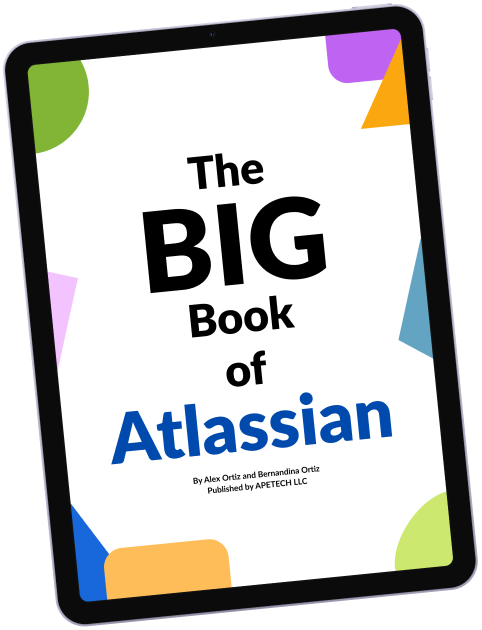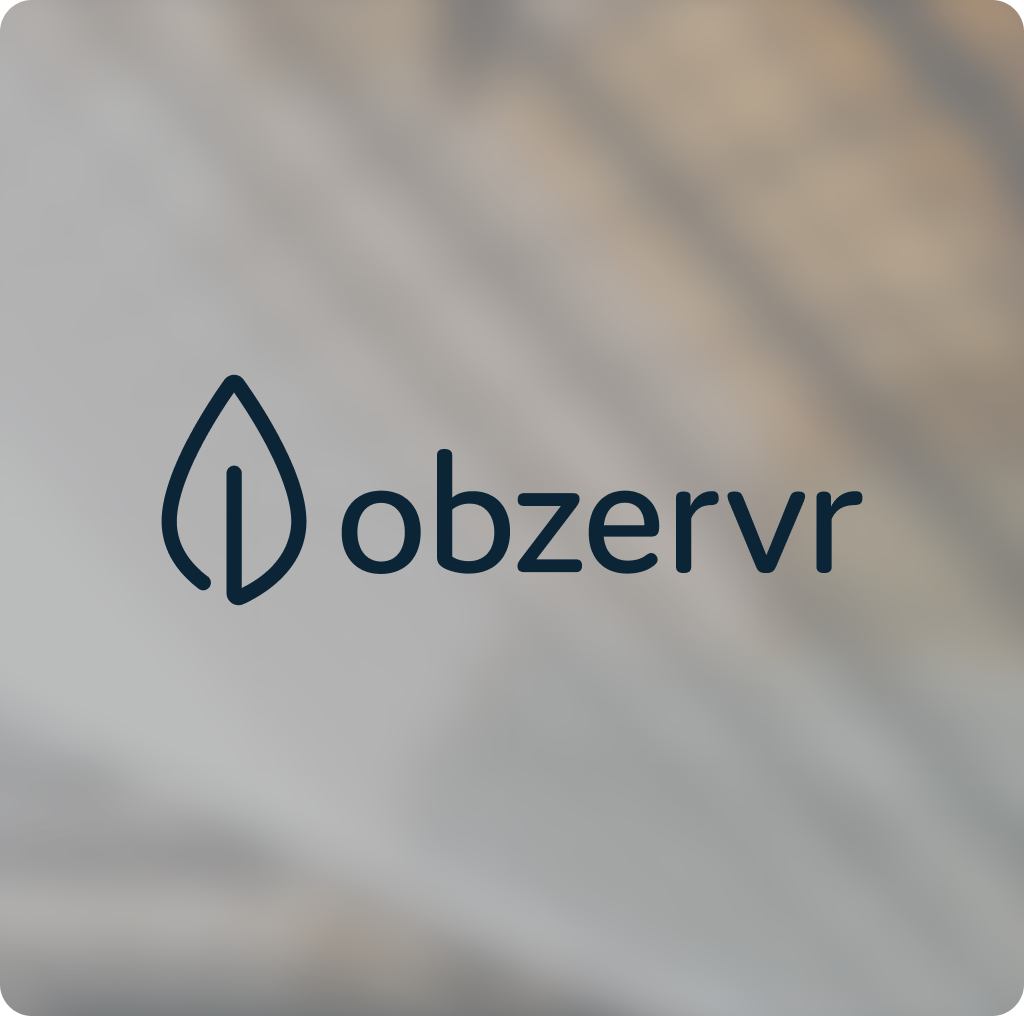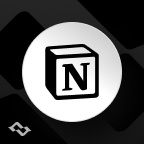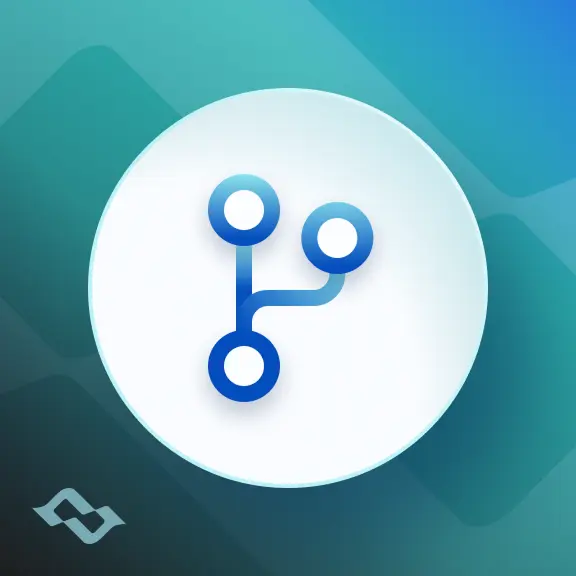Note-taking is an essential skill for staying organized and productive in both personal and professional settings. The rise of digital technology has made note-taking, including digital notes, more convenient and efficient than ever before, with a variety of note-taking apps available to suit every need and preference. In this article, we’ll explore some of the best note-taking apps available today, and the features that make them stand out.
1. Evernote Note Taking App
Evernote is one of the most popular note-taking apps available, with a robust set of features that make it a versatile tool for personal and professional use. With Evernote, you can take notes, save web pages, record audio notes, and sync your data across all your devices. You can also attach files, record audio, and use tags and notebooks to organize your notes. Additionally, Evernote offers a range of third-party integrations, allowing you to connect it to other tools you use every day, like Gmail, Slack, and Trello.
Key Features:
- Web Clipper: Save web pages, articles, and screenshots directly to your notes.
- Templates: Pre-made templates for project planning, meeting notes, and to-do lists.
- Rich Formatting: Supports text formatting, multimedia content, and attachments.
- Collaboration: Share notes with colleagues and collaborate in real-time.
Best For:
Professionals who need to manage large volumes of information and work on multiple devices.
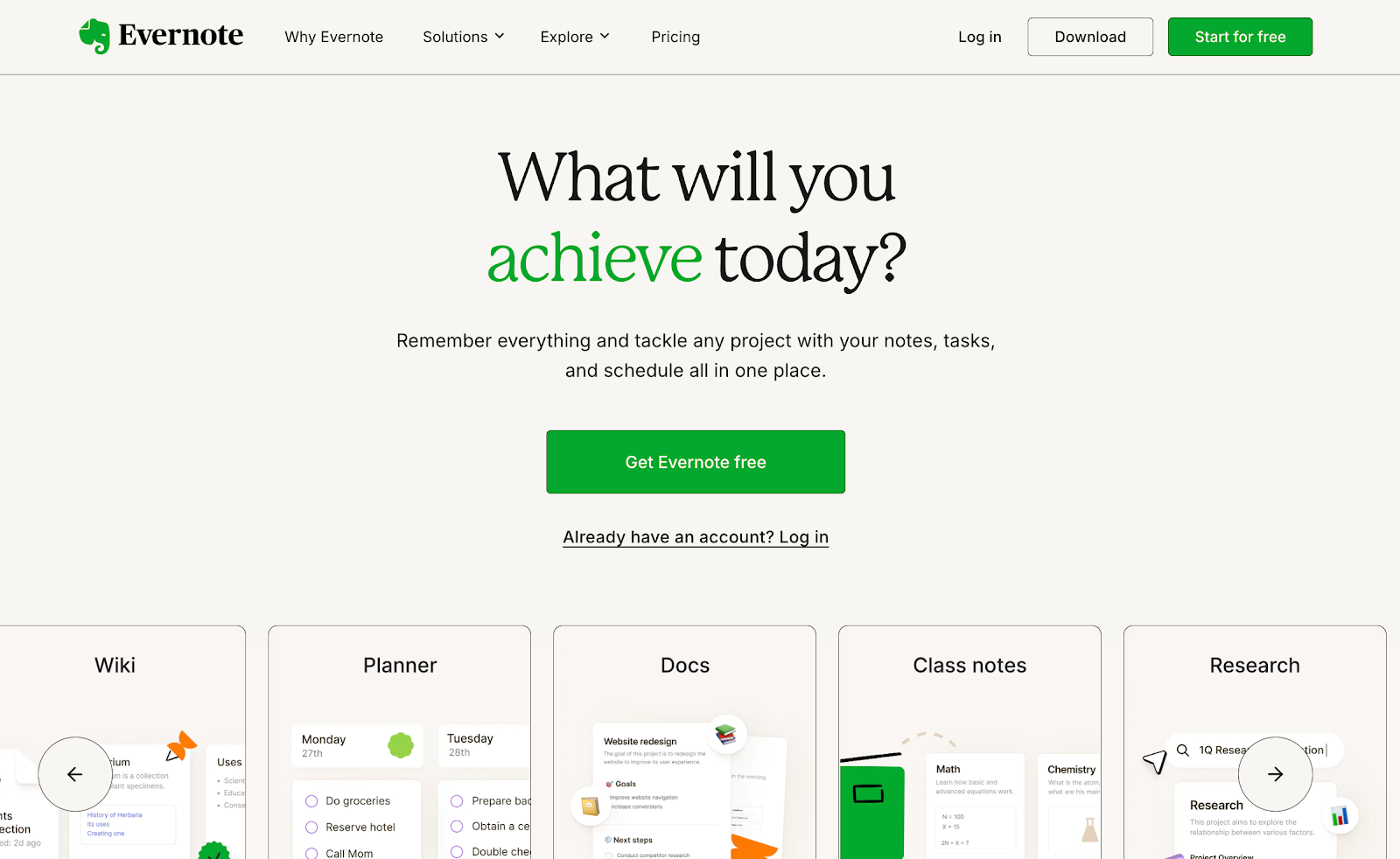
2. Notion
Notion is a powerful note-taking app that can be used for a variety of purposes, including project management, task tracking, and knowledge management. Notion’s flexibility and customizability make it a popular choice among users who want a tool that can adapt to their specific needs. With Notion, you can create a wide range of content, including notes, to-do lists, calendars, and databases. Notion also offers robust collaboration features, making it a great choice for teams while providing a dedicated space for your own notes.
Key Features:
- Blocks: Use blocks to organize information, including text, images, databases, and more.
- Templates: A vast library of customizable templates for project management, tracking, and note-taking.
- Collaboration Tools: Share notes and workspaces with teammates, allowing for real-time collaboration.
- Cross-platform Support: Available on desktop, mobile, and web.
Best For:
Teams and individuals looking for an all-in-one workspace that combines note-taking, task management, and collaboration.
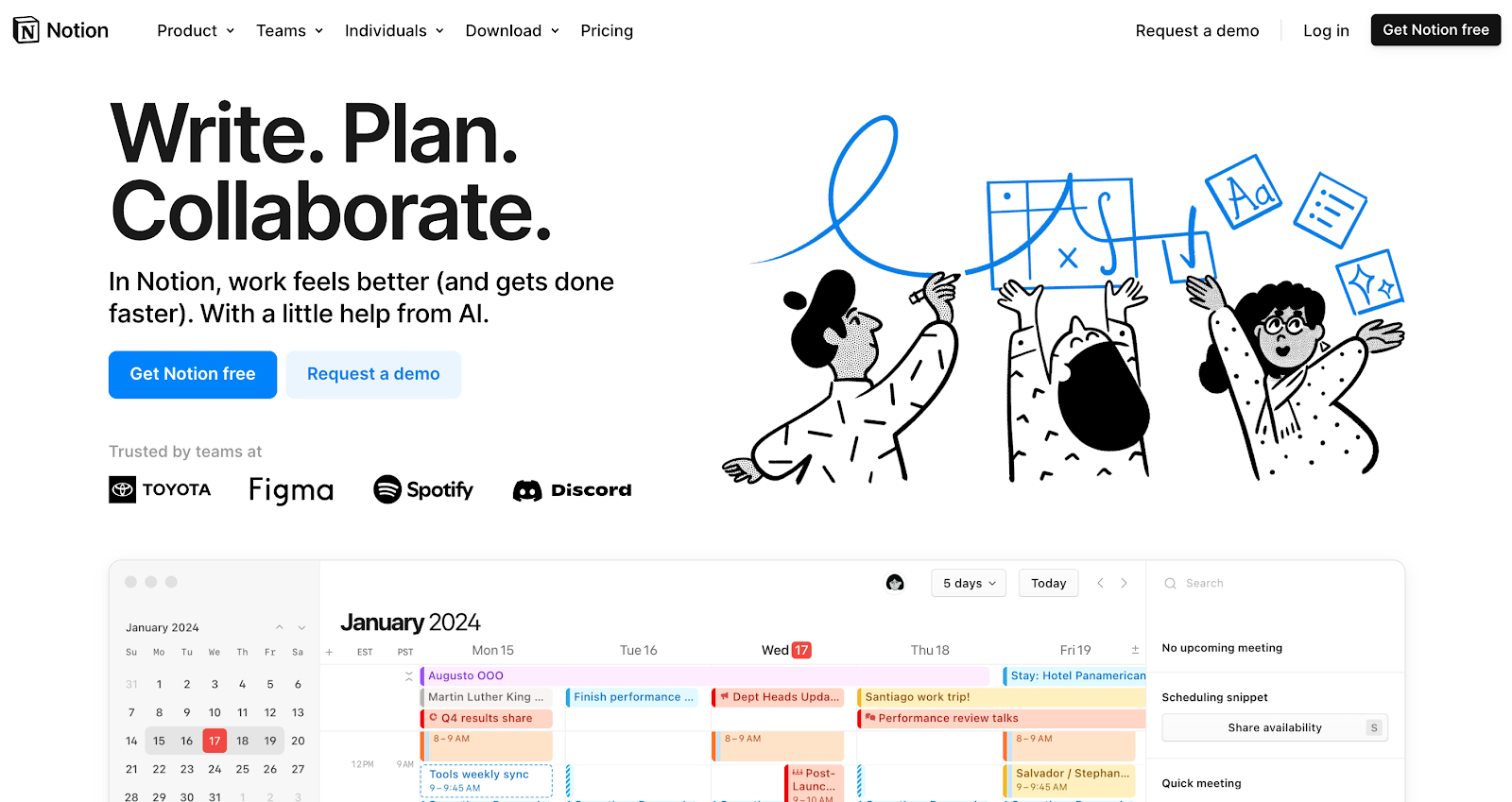
3. Microsoft OneNote
OneNote is a note-taking app developed by Microsoft that offers a range of features, including note-taking, task management, and collaboration tools. OneNote is a great choice for users who want a single tool that can handle multiple tasks. You can take notes in a variety of formats, including text, audio notes, and images, and organize them using tags, notebooks, and sections. Additionally, OneNote offers powerful search functionality, making it easy to find the notes you need quickly.
Key Features:
- Notebook Organization: Organize notes into notebooks, sections, and pages.
- Freeform Notes: Take notes anywhere on the page, just like on a physical notebook.
- Integration with Microsoft Office: Seamless integration with other Microsoft tools like Outlook and Word.
- Handwriting and Drawing: Ideal for those using stylus-supported devices.
Best For:
Users who want a free, feature-rich tool that integrates seamlessly with Microsoft Office and supports multiple types of note formats.
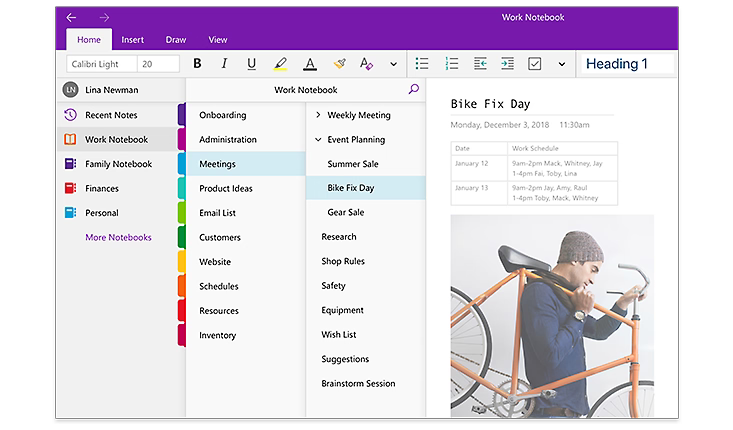
4. Google Keep
Google Keep is a simple online note taking app that allows you to take notes, make to-do lists, and set reminders. It offers a clean and user-friendly interface, and syncs your notes across all your devices. Google Keep is a great choice for users who want a straightforward note-taking app without too many bells and whistles.
Key Features: Digital Notes
- Pinning and Color Coding: Organize your notes by pinning important ones to the top or color-coding them for easy identification.
- Voice Notes: Record voice memos and have them transcribed into text.
- Checklists: Perfect for making to-do lists with checkable items.
- Reminders and Syncing: Set reminders for notes and access them across all your devices via Google Drive.
Best For:
Users who want a simple, fast, and intuitive note-taking app that integrates well with other Google services.
5. Obsidian
Obsidian is a powerful markdown-based note-taking app, designed for users who value personal knowledge management. It emphasizes linking notes and creating a web of interconnected ideas, making it popular among researchers and writers.
Key Features:
- Local Storage: All your notes are stored locally, giving you full control over your data.
- Bidirectional Links: Easily link notes together, helping you create a personal knowledge base.
- Markdown Support: Write and format notes using markdown, ensuring compatibility with other platforms.
- Plugins and Customization: A wide array of community plugins to extend functionality.
Best For:
Writers, researchers, and those interested in creating a personal knowledge network with interconnected ideas.
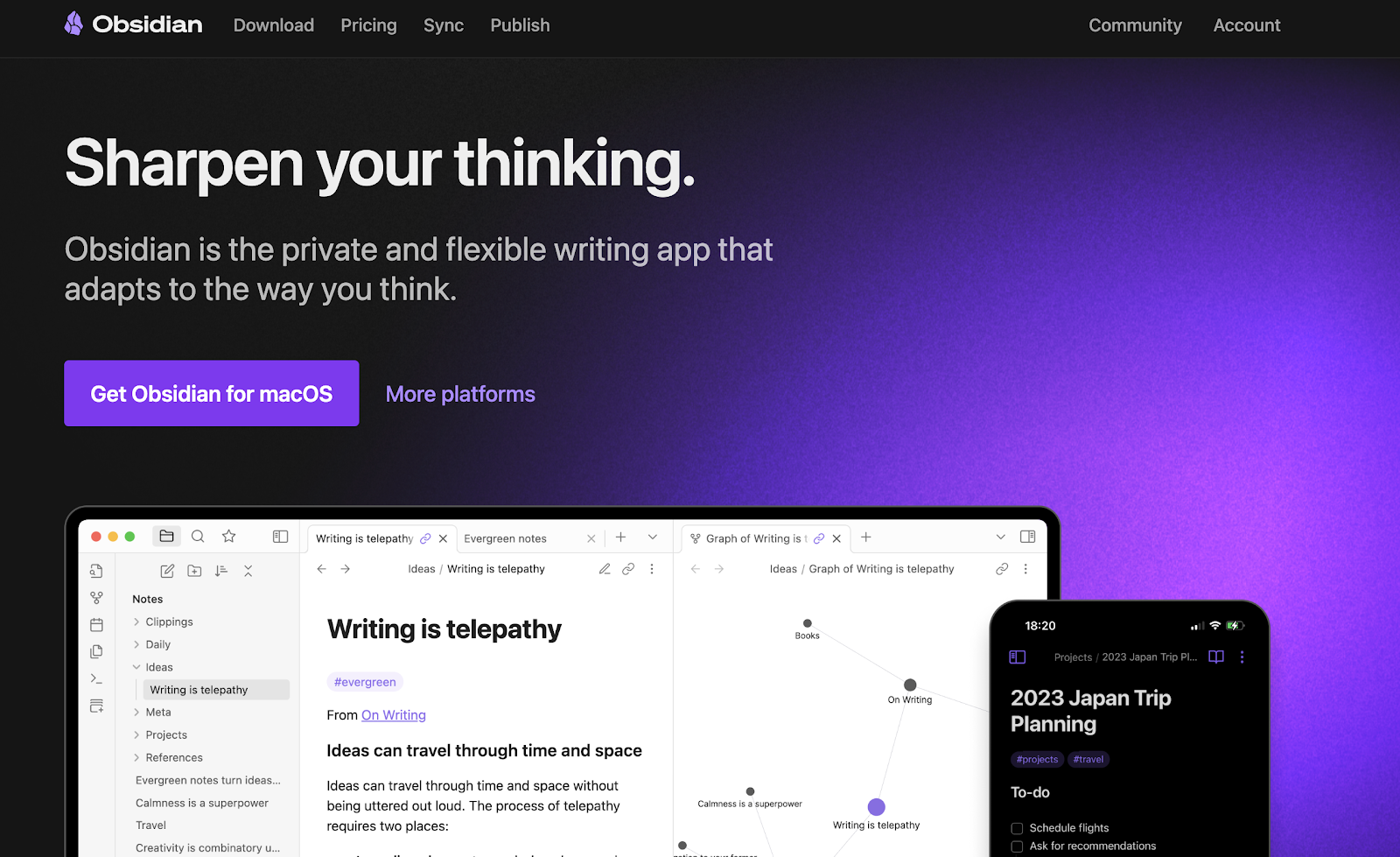
6. Apple Notes
Apple Notes is a built-in note-taking app for iOS and macOS devices. It offers a simple interface and integrates well with other Apple apps and services. With Apple Notes, you can take notes in a variety of formats, including text, images, and drawings. You can also add checklists and tables to your notes. Additionally, Apple Notes syncs your notes across all your Apple devices, making it easy to access your notes on the go.
Key Features:
- Quick Notes: Easily jot down notes from your iPhone, iPad, or Mac.
- Rich Formatting: Supports text, images, sketches, and attachments.
- Apple Pencil Support: Perfect for handwritten notes on iPad.
- iCloud Sync: Syncs notes across all Apple devices seamlessly.
Best For:
Apple users looking for a simple, free note-taking app with deep integration into the Apple ecosystem.
7. Simplenote
Simplenote is a lightweight note-taking app that offers a clean and simple interface. It syncs your notes across all your devices and supports collaboration features, making it a great choice for teams. With Simplenote, you can take notes in plain text format, and organize them using tags and pins. Simplenote also offers powerful search functionality, making it easy to find the notes you need quickly.
Key Features:
- Fast and Lightweight: Simplenote focuses on speed and simplicity, offering a seamless experience.
- Sync Across Devices: Syncs notes across all your devices in real-time.
- Markdown Support: Write notes using markdown for quick and easy formatting.
- Version History: View and restore previous versions of your notes.
Best For:
Minimalists looking for a fast, free, and distraction-free note-taking app.
8. Roam Research
Roam Research is a note-taking app that helps users organize their thoughts in a non-linear way. It’s ideal for those who prefer to connect ideas, create mind maps, and develop deep knowledge bases through bidirectional linking.
Key Features:
- Bidirectional Links: Create a network of related notes for a dynamic knowledge base.
- Daily Notes: Automatically opens to a new daily note, making it easy to capture fleeting ideas.
- Graph View: Visualize the connections between your notes.
- Markdown Support: Format your notes with markdown for a clean, efficient writing experience.
Best For:
Researchers, students, and thinkers who want a tool that encourages non-linear thinking and idea connections.
Benefits of Taking Notes
Taking notes is an essential skill that offers numerous benefits for individuals, students, and professionals. By taking notes, you can significantly improve your comprehension, retention, and recall of information. Notes serve as a valuable resource for reviewing and studying material, helping you to identify key concepts and relationships between ideas. This process not only aids in memorization but also enhances your understanding of the subject matter.
Moreover, note-taking can facilitate critical thinking and analysis, allowing you to evaluate and synthesize complex ideas more effectively. This skill is particularly useful in academic and professional settings where deep understanding and insight are required.
Effective note-taking also boosts productivity and organization. By prioritizing tasks and managing your time more efficiently, you can stay on top of your responsibilities. Additionally, notes provide a visual representation of information, making it easier to review and recall later. This visual aspect can be particularly helpful for visual learners.
Furthermore, taking notes helps develop active listening and observation skills. By engaging more fully with the material being presented, you can better absorb and understand the information. This active engagement is crucial for effective learning and retention.

Effective Note Taking Methods
There are several effective note-taking methods that can help you capture and organize information efficiently. Here are a few popular methods:
The Outline Method
The Outline Method is a structured note-taking approach that involves organizing information in a hierarchical format. This method is ideal for lectures or meetings where information is presented in a logical and sequential manner. To use the Outline Method, start by creating a main topic or heading, and then break down the information into subtopics and supporting details. Use bullet points, numbers, or letters to distinguish between main points and subpoints. This method helps you clearly see the structure of the information and makes it easier to review later.
The Charting Method
The Charting Method is a visual note-taking approach that involves organizing information into charts, tables, or diagrams. This method is perfect for comparing and contrasting information or identifying patterns and relationships between ideas. To use the Charting Method, start by creating a chart or table with columns and rows, and then fill in the information accordingly. Use headings and labels to distinguish between different categories of information. This method is particularly useful for subjects that involve a lot of data or detailed comparisons.
The Cornell Method
The Cornell Method is a popular note-taking approach that involves dividing your paper into two columns. The narrower column is used for keywords, questions, and summaries, while the wider column is used for notes and supporting details. This method is ideal for lectures or meetings where information is presented rapidly. To use the Cornell Method, start by dividing your paper into two columns, and then take notes in the wider column. Use the narrower column to summarize key points and ask questions. This method not only helps in organizing notes but also encourages active engagement with the material.
These note-taking methods can be adapted to suit your individual needs and preferences. Experiment with different methods to find what works best for you, and remember to review and practice your note-taking skills regularly to improve your effectiveness.
How to make good notes?
Making good notes is a skill that can be developed with practice. Effective note-taking allows you to retain information, organize your thoughts, and review key points later. Here are some tips for making good notes:
Organize your Notes
While linear note taking is a traditional method, consider experimenting with other techniques like mind mapping or the charting method to find what works best for you.
Be Selective
Don't try to write down everything you hear or read. Instead, focus on the most important information, key points, and ideas. This will help you avoid getting overwhelmed with too much information and enable you to concentrate on what's essential.
Use Abbreviations and Symbols
Using abbreviations and symbols can save time and make your notes more concise. Develop a system of shorthand that works for you, and use it consistently. For example, use arrows to indicate cause and effect, or a star to denote something important.
Organize your Notes
Organizing your notes is essential for retaining information and finding it later. Use headings, bullet points, and numbered lists to group related ideas together. Consider using different colors or highlighting to emphasize key points.
Review your Notes
Reviewing your notes soon after you make them can help reinforce the information in your mind. Spend some time reviewing your notes after each study session, lecture, or meeting. This will help you retain the information better and identify any gaps in your understanding.
Use Technology to Your Advantage: Effective Note Taking Methods
Technology can be a useful tool for taking notes. Consider using note-taking apps or software, which allow you to organize, search, and share your notes easily. You can also use voice recording apps to capture lectures or meetings or take pictures of whiteboards or slides for later reference.
Be Present and Engaged
The most important thing you can do to make good notes is to be present and engaged. Pay attention to what is being said or presented and actively think about how it relates to what you already know. Ask questions and participate in discussions to deepen your understanding.
Making good notes is an essential skill that can help you retain information, organize your thoughts, and review key points later. By being selective, using abbreviations and symbols, organizing your notes, reviewing them, using technology, and being present and engaged, you can improve your note-taking skills and become a more effective learner.


